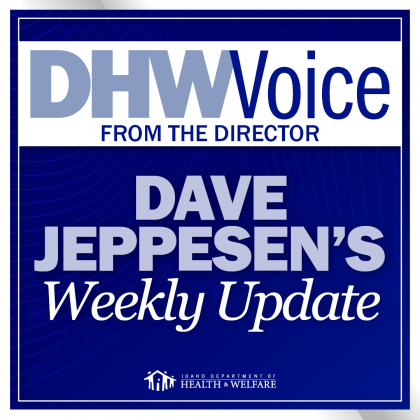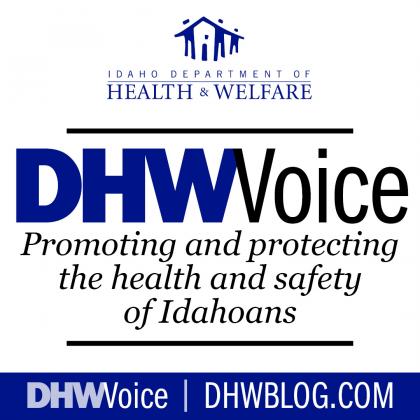Healthy backyard flocks and healthy families: Tips from the Division of Public Health
Backyard birds such as chickens, ducks, geese, and turkeys are increasing in urban and suburban areas. Raising these birds is a popular way to have homegrown eggs and poultry, and a fun way for children to learn about caring for animals. While keeping poultry flocks can be fun and educational, they can carry harmful germs that can make you sick. Follow these tips to keep yourself and your family healthy while enjoying your backyard flocks.
Wash your hands. Wash your hands and your children’s hands with soap and running water after touching backyard poultry, handling fresh eggs, or anything in the area where your birds live or roam. Wash hands after touching eggs, handling poultry equipment, and being in poultry areas. Use hand sanitizer if soap and water are not readily available.
Keep birds outside and don’t eat or drink near them. Never bring baby chicks into the home, where they could contaminate indoor surfaces. Avoid eating and drinking around them.
Monitor young children. Children younger than 5 years old should not handle or touch chicks, ducklings, or other live poultry. Younger children are more likely to become ill. Older children should only handle baby chickens, ducklings, or other backyard poultry under adult supervision. If you are supervising young children, teach them to avoid putting their hands or baby poultry near or in their mouths and make sure they wash their hands thoroughly after handling the birds. Do not give small children chicks or ducklings as gifts.
Avoid spreading germs. Don’t kiss or snuggle your birds and don’t touch your face or mouth after handling them. Change your shoes after walking in the coop and before you go inside, so you do not track any germs into the house. Clean poultry supplies like food and water containers outside. Cook your eggs thoroughly.
Diseases backyard flocks can spread include salmonellosis, avian influenza, campylobacteriosis, and E. coli. Specific tips for each germ are listed below.
- Salmonellosis is caused by bacteria called Salmonella
In birds, Salmonella can live in the intestines and can be shed in their droppings, without them appearing ill. In people, Salmonella can cause diarrhea, fever, and stomach cramps anywhere from 12 to 72 hours after infection. People with salmonellosis are usually sick for four to seven days and can spread it to others. If you think you or a loved one has a Salmonella infection, you should seek medical attention immediately.
Children under 5 years of age (particularly those younger than 12 months) and people with underlying health conditions, older than 65, or with a weakened immune system, can get very sick from Salmonella bacteria, even requiring hospitalization. Children are likely to get infected because their immune systems are still developing, and they are much more likely to snuggle or kiss chicks and put their fingers in their mouths after touching birds.
- Avian influenza is caused by an influenza virus
Avian influenza, or “bird flu,” is a contagious respiratory illness circulating in birds that is caused by influenza viruses. Although related, these are not the same viruses that people might get during the regular influenza season. Human infections from bird flu are rare, but influenza viruses could spread from birds to people and then spread from person to person, potentially leading to a new pandemic. The few human infections that have been identified have caused mild illness in some people, but severe illness in others.
Because there is a risk for infection when handling sick or dead birds, bird owners should be careful and contact their veterinarian and the Idaho State Department of Agriculture (see link below) right away for guidance on how to report and manage any sick birds. For birds that test positive, public health officials will work with bird owners to monitor for symptoms and recommend testing if they become ill.
- Campylobacteriosis is caused by the bacteria Campylobacter
Campylobacter is common in the intestines of birds and is shed in droppings. Like Salmonella, the bacteria can infect and cause illness in people even if the birds look healthy. Symptoms in people include diarrhea, fever, and stomach cramps within two to five days of becoming infected. Ill people are sick for about one week and are contagious to others. Careful handwashing can prevent spread in the household. Children under 5 years of age and people with underlying health conditions, those who are older than 65, or with a weakened immune system can get very sick.
- E. coli is caused by the bacteria Escherichia coli
Birds naturally have E. coli in their gut, and rarely look sick. The bacteria can be shed in bird droppings. Although most kinds of E. coli are harmless, others can make people sick. Most symptomatic people will have stomach cramps, diarrhea, and vomiting that starts three to four days after being infected and will be sick for up to a week. Some people develop a type of kidney failure (hemolytic uremic syndrome, or HUS) and must be hospitalized. Severe illness is more likely in children under 5 years of age and people with underlying health conditions, those who are older than 65, or with a weakened immune system.
Resources:
- Safely Keeping Backyard Poultry, from CDC: https://www.cdc.gov/healthypets/pets/farm-animals/backyard-poultry.html
- Salmonella, from CDC: http://www.cdc.gov/salmonella/
- Avian influenza, from CDC: https://www.cdc.gov/flu/avianflu/index.htm
- Avian influenza, from USDA: https://www.aphis.usda.gov/aphis/ourfocus/animalhealth/animal-disease-information/avian
- Avoiding zoonotic disease from CDC: https://www.cdc.gov/zoonotic/gi/index.html
- Idaho State Department of Agriculture avian influenza site, including sick bird screening survey: https://agri.idaho.gov/main/animals/avian-species/avian-disease/avian-influenza/#:~:text=If%20you%20see%20any%20avian,information%20on%20testing%20the%20animal
The Idaho Department of Health and Welfare is dedicated to strengthening the health, safety, and independence of Idahoans. Learn more at healthandwelfare.idaho.gov.


Join the Discussion
Please note the following terms of participation in commenting on the DHW Voice blog.
To ensure a productive discussion you agree to post only comments directly related to this post and to refrain from posting obscenities; threatening, abusive or discriminatory language; sexually explicit material; and other material that would violate the law if published here; promotional content; or private information such as phone numbers or addresses. DHW reserves the right to screen and remove inappropriate comments.